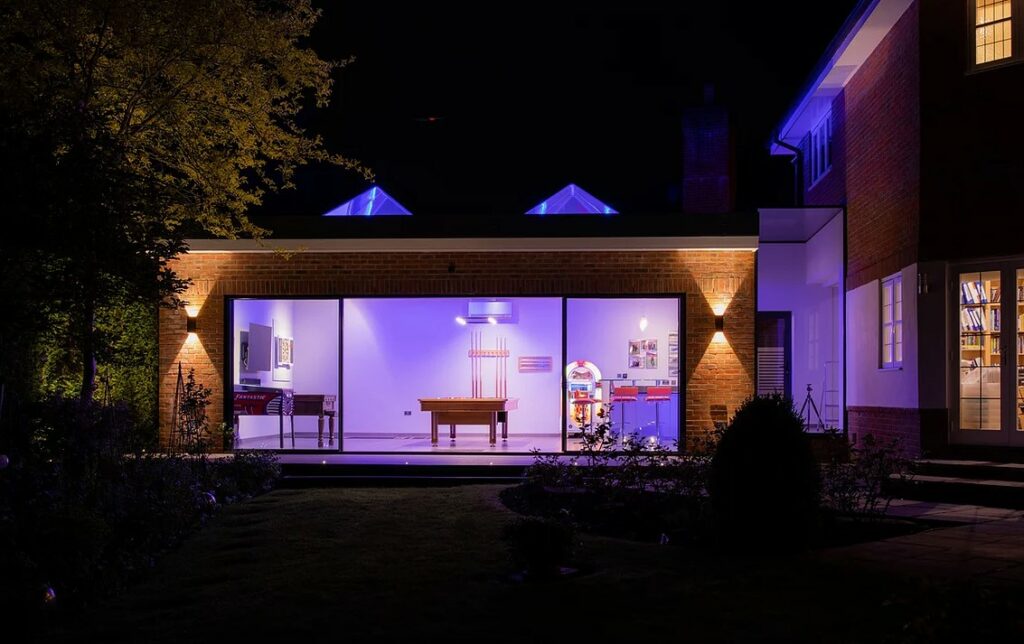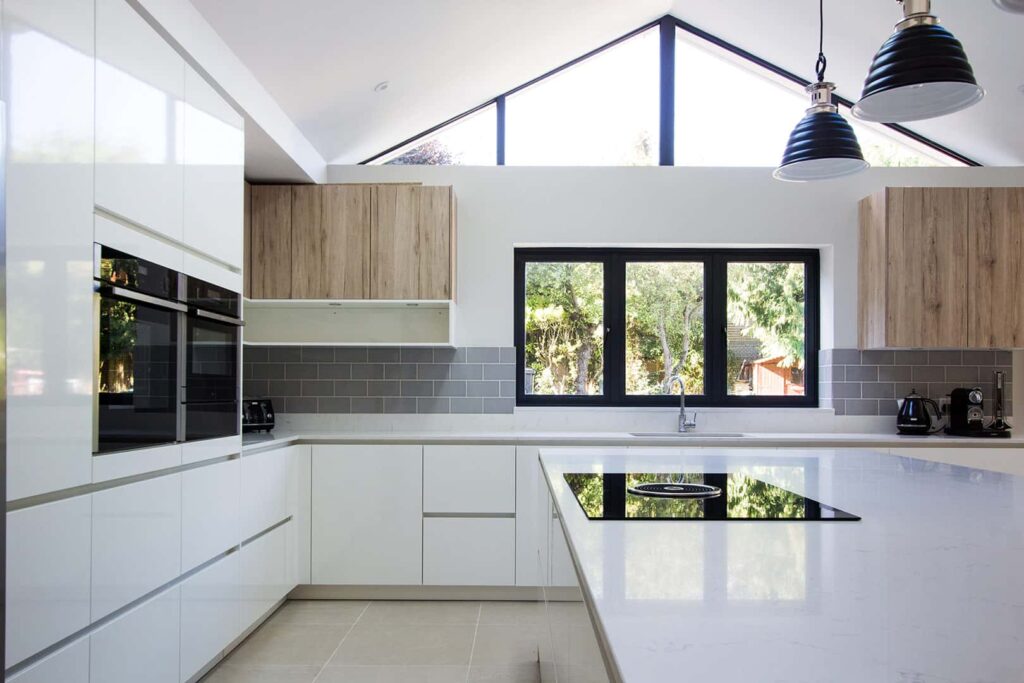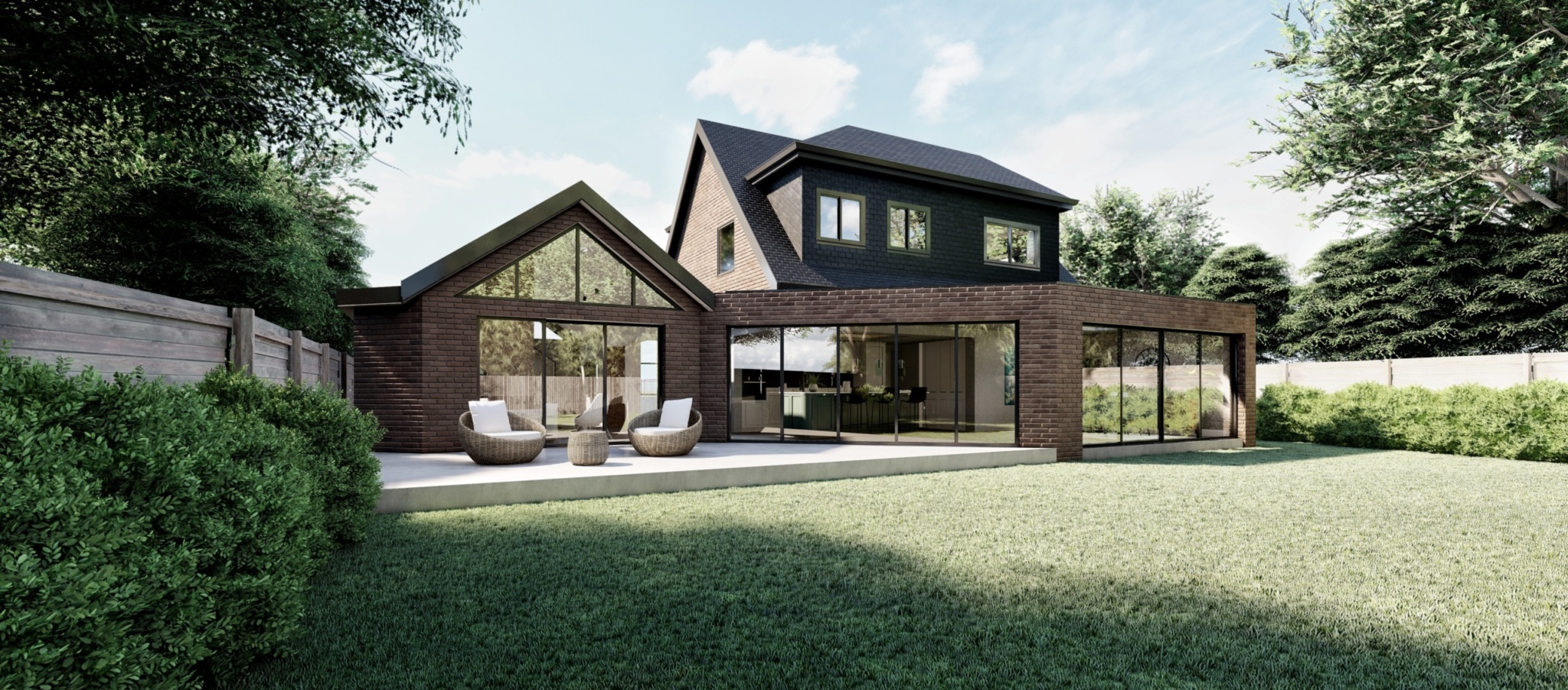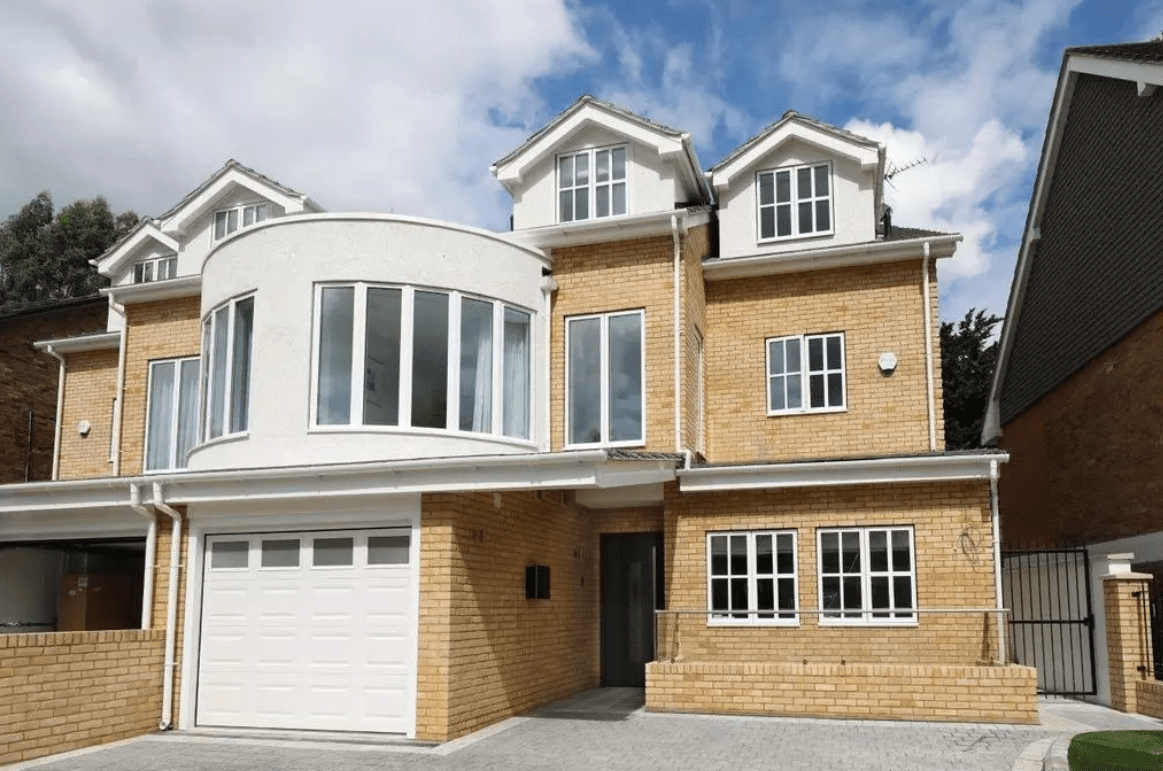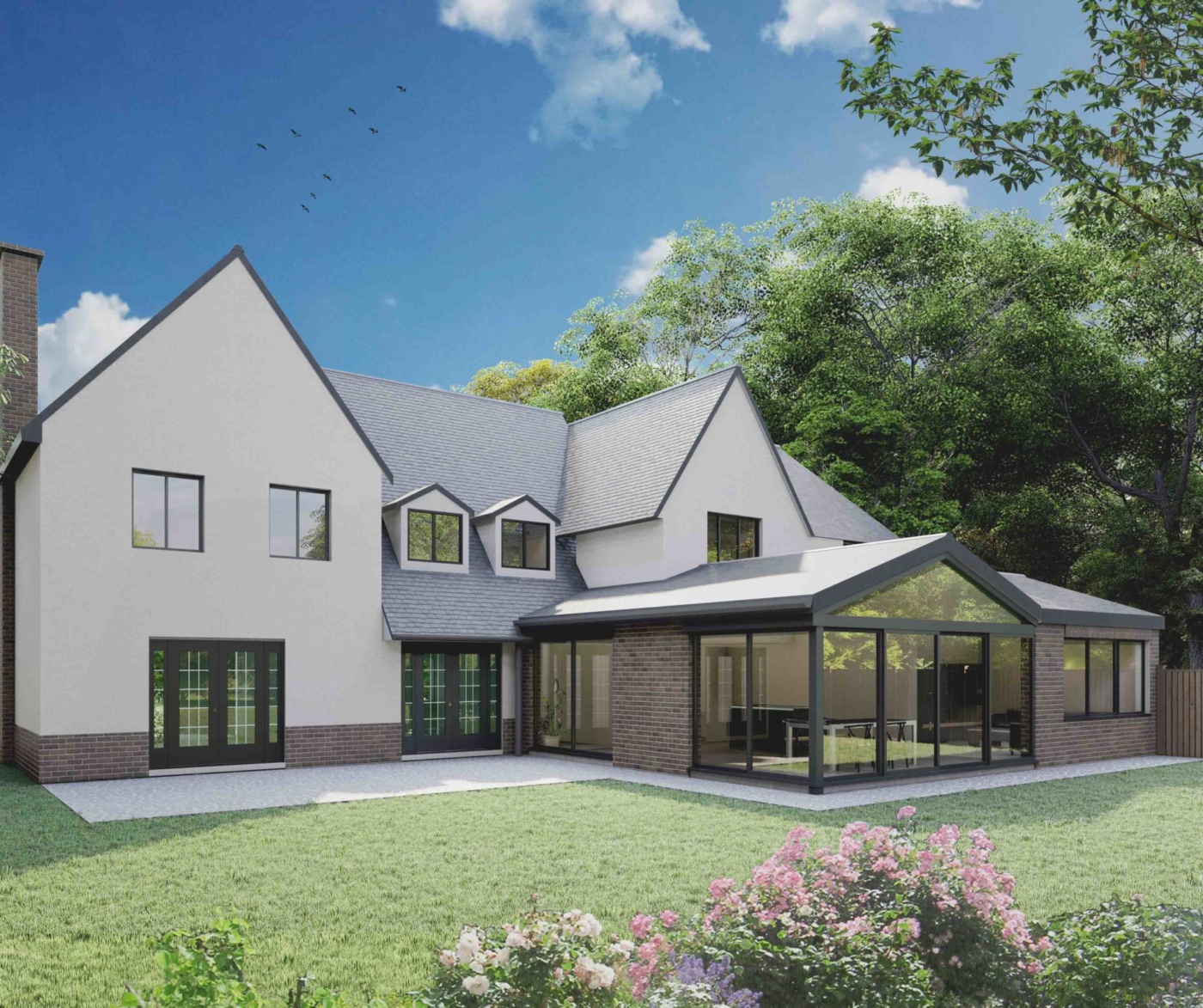Lighting In and Around Extensions
One of the factors which can completely transform your existing or new space is the choices you make with regard to lighting. Welcome to Extension Architecture’s complete guide to lighting in home extensions!
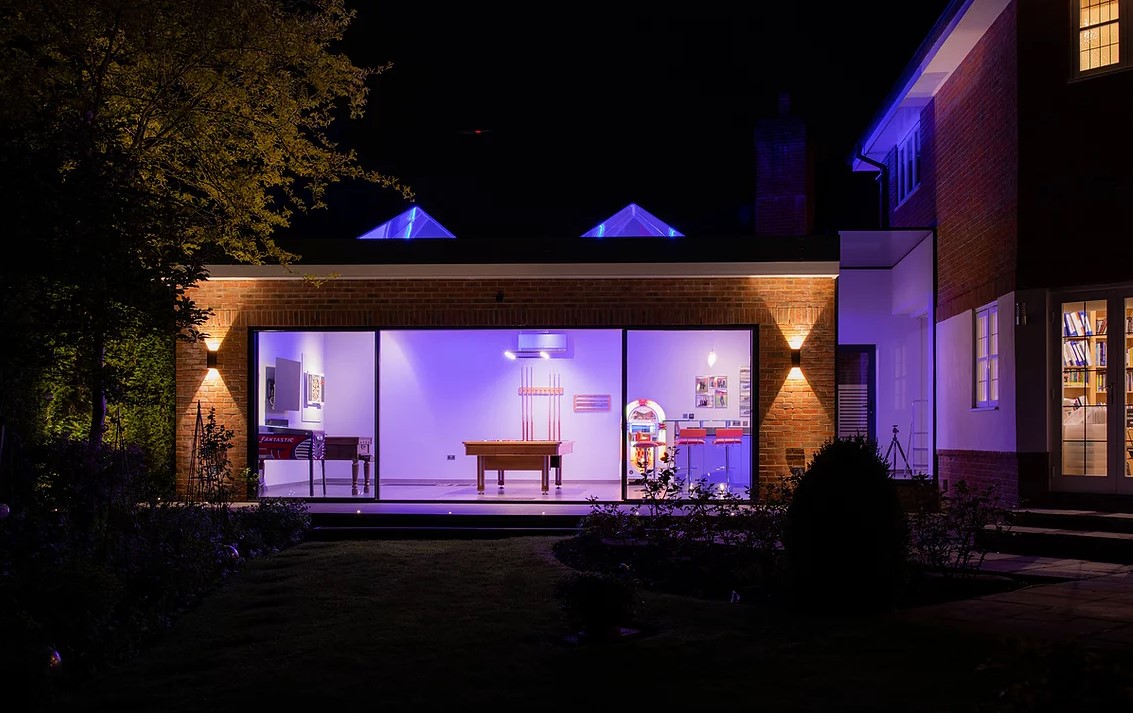
In the present day there are two major issues that the built environment faces; Sustainability and Mental Health. It is uncommon to hit two birds with one stone, however, one way in which these two very broad subjects are linked is in the field of lighting.
Lighting is a fundamental aspect of design and one which, when implementing a successful strategy, has been proven to reduce the risk of emotional stress and anxiety and positively contribute to reducing mental health issues, alongside boosting productivity.
Lighting comes in so many forms and has been developed throughout history and it is well-known that different sources and colours can have lasting effects on mood and behaviour, hence choosing the right lighting for your home extension is key.
Let’s Take a Step Back in Time
The first and most important source of lighting for, not only us, but the entire globe, is of course the sun.
Daylight is noted by professionals in every industry as a passive solution to improve energy performance, visual comfort and mental well-being, without expensive installation or operational costs. It has long been the centre of our solar system, and is the primary source of heat and light that make life on our planet possible. It is also the reason for the circadian rhythm; the natural cycle that our bodies make in each 24 hour cycle.
The evolution of technology has allowed us, humans, to develop new methods of lighting space, which have undoubtedly improved throughout history. From the first discovery of fire, to early Victorian gas lamps, to filament light bulbs and more recently LED lighting, the flexibility of lighting and our ability to manipulate mood and productivity with light has reached an all time high.

Steph Fanizza, Architectural Design & Team Manager
Tell us about your plan and we'll send you a free quote! It takes less than 60 seconds!
Modern Lighting & Our Recommendations
Obtaining planning permission is unknowingly only the beginning of designing your new home, with many other decision-making opportunities coming into play including interior and landscape design – undoubtedly one of the most important moments in which lighting choice can hugely impact the final outcome.
When it comes to choosing the type of lighting strategy, the colours and warmth of the light itself, and even the design style of the fittings which you go for, there are no clear DOs and DON’Ts that apply for everyone, but here we will explain our tips and tricks for maximising your home extension’s and barn conversions potential through the world of lighting.
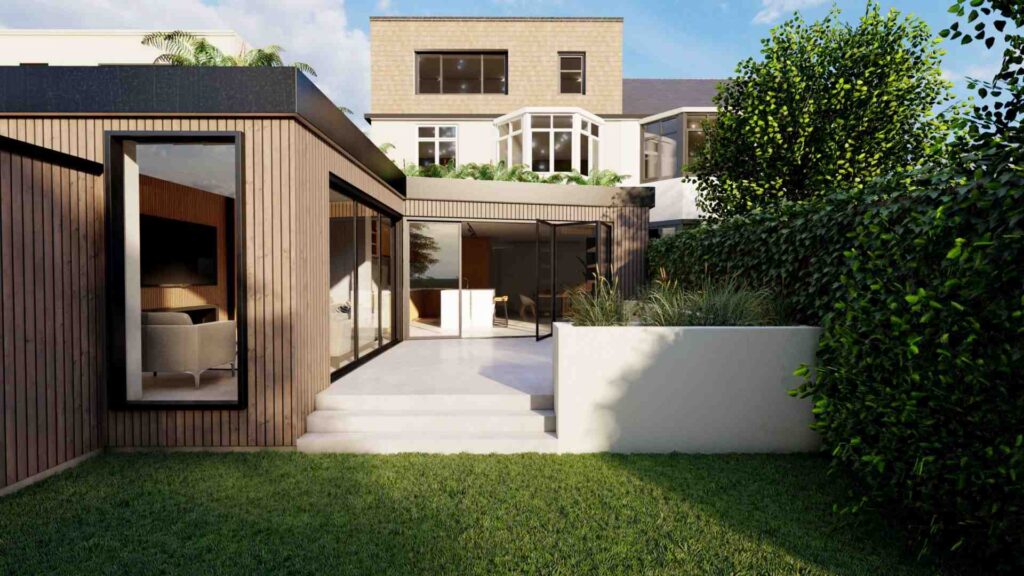
Single Storey Rear Extension with a Combination of Natural and Artificial Lighting in Wood Green, Haringey
Natural Light – The Overwhelming Benefits
Daylighting is the most cost-effective, environmentally friendly and health-benefiting forms of lighting due to its influence on our bodies circadian rhythm and release of serotonin, zero-carbon emissions and overall effectiveness.
There is nothing quite like residing in a space flooded by natural daylight, and I am sure you can agree that it is undoubtedly one of the best feelings to be relaxing, working, exercising or engaging in any other activity either with the sun beaming down on you.
Through the smart integration of roof lights, glazing both externally and internally, and even strategically placed light-wells, bringing this feeling into the comfort of your own home is a cost-effective way of boosting your energy and wellbeing.
There are also ways to increase the presence of natural light with little-to-zero costs, including rearranging furniture to provide more open, brighter spaces, introducing mirrors to reflect the light and have it bouncing from surface to surface, or simply redecorating your space using light tones such as a warm, white paint.
Natural lighting is more practical in spaces that you spend most of your time in and where glare will not be a recurring issue. These include living spaces, kitchens and bathrooms.
LED Lighting – Sustainability & Colour Psychology
Firstly developed in 1962, the Light Emitting Diode, or LED, is a sustainable alternative to the pre-existing tungsten-filament bulb that you will find in most homes. The benefits are countless, with the main points being:
Energy Consumption – LEDs use just 75% of the energy of traditional Filament bulbs, which can reduce your electricity bill by around £300 per year!
Life Span – The life-span of an LED is said to be approximately 10 years, or 100,000 hours of continuous use, compared to 1,200 hours for a filament bulb – a whopping 195% increase! The major benefit of this is the elimination of a ‘throwaway culture,’ reducing the number of waste heading to landfill sites.
Quality of Light – Originally, Filament bulbs remained the go-to choice as they emitted a far brighter, wider-reaching light. However, LED development is ongoing and they now provide almost, if not a better, quality of light!
With recent developments, you have probably seen new LED strip lighting taking the consumer market by storm. We love this style of lighting as it allows for flexibility of warmth, colour and brightness depending on how you feel.
The integration of strategic LED lighting into areas of your home such as home cinemas, entertainment spaces, bedrooms, living rooms, and even in the garden, can provide a great feature, transforming your space into something truly unique and beautiful.
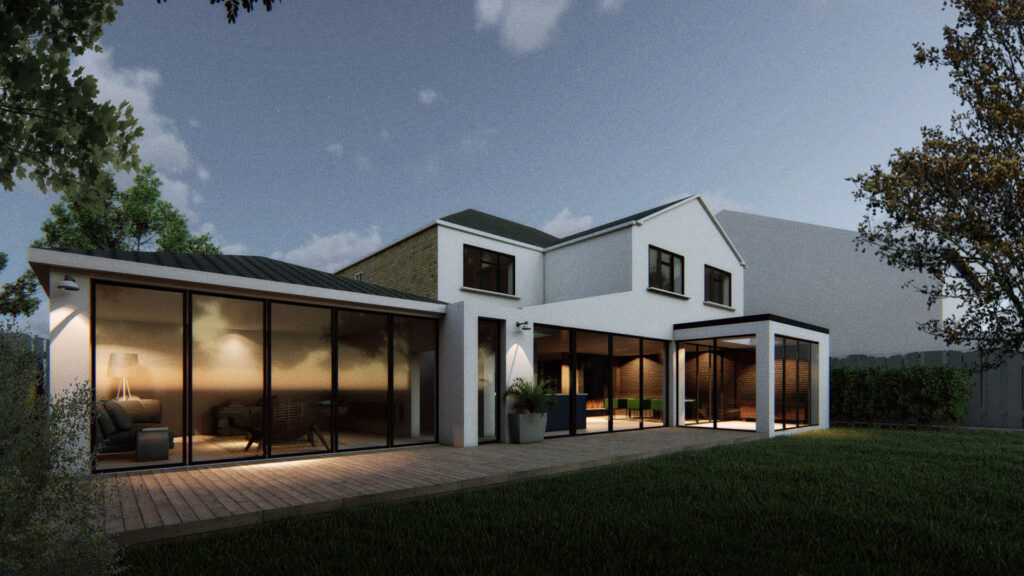
Double Storey Extension with lots of glazing and strategic lighting in Southgate, Enfield
Recessed Ceilings – Indirect Lighting
A great way to introduce more ambient lighting into your home is through recessed ceilings, such as the examples shown below.

From left to right: Single Storey Wraparound Extension with a Focus on Natural & Warm Indirect Lighting in Streatham, Lambeth.
By integrating lighting into alcoves in the ceiling, either centrally or at key points, you are able to design-in ambient lighting which will illuminate an entire space without having a significant impact on the functionality of individual elements. This is especially useful in open-plan living/kitchen/dining spaces, as you can have an ambient glow without harsh, direct lighting, for example over your TV space where it may generate unwelcomed glare.
With a combination of ambient, recessed lighting and dedicated spotlights, it is possible to create the perfect balance of uniformed illumination for the overall space and task lighting for important activities such as desktop working, dressing, cooking and dining.
Summary
No matter what your new extension will accommodate, lighting is an important factor of design which shouldn’t be left to the last minute. With strategic, designed-in lighting strategies, you can make your new or improved space truly special, with no unnecessary wires or out-of-place fittings.
Here at Extension Architecture, our full interior design and tender package services will help you to choose the right lighting solutions for your space to ensure the maximisation of both functionality and useability.

Single Storey Extension to provide a Games & Entertainment Space in Esher, Surrey


